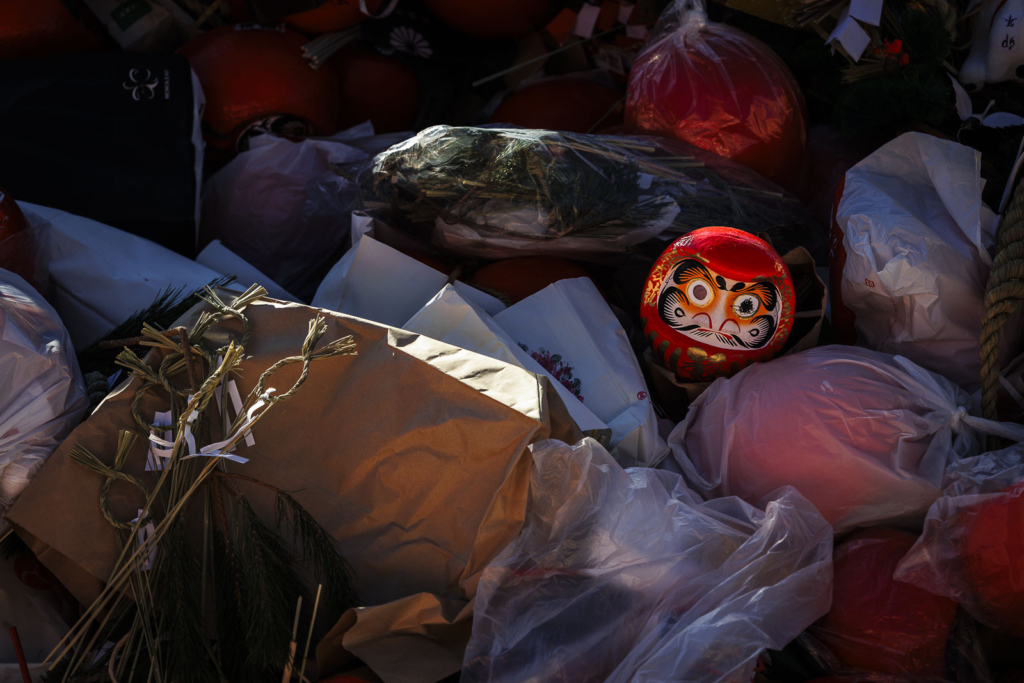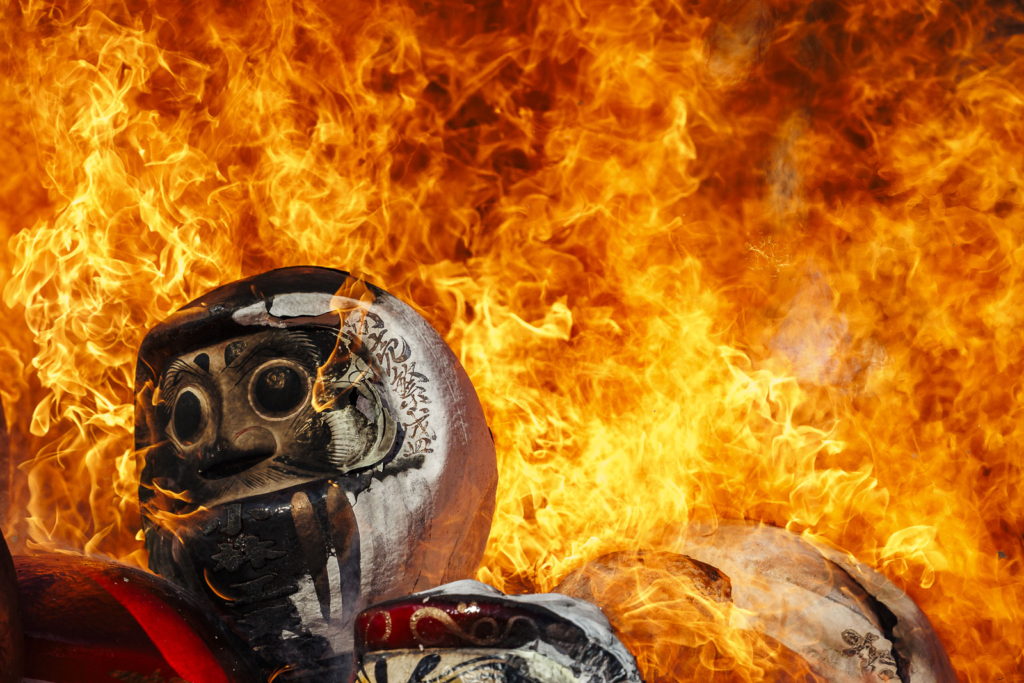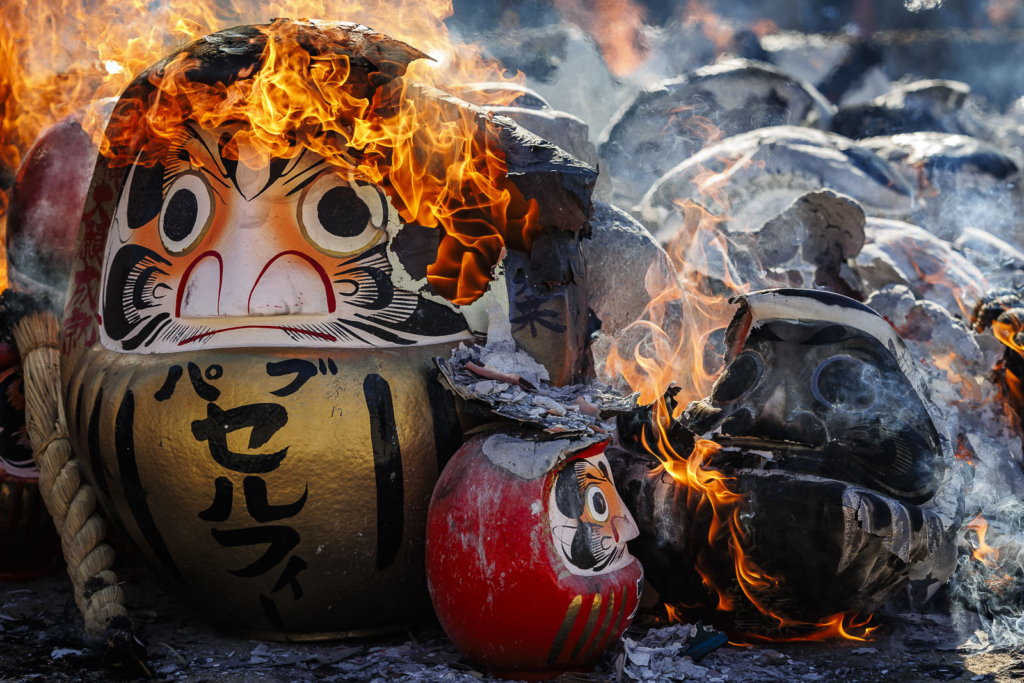As the ninth day of a new year unfolds, the city of Maebashi in Gunma prefecture, a stone’s throw from Tokyo, becomes the stage for a poignant tradition: the Daruma burning ceremony.

Hatsuichi Matsuri is a celebration deeply rooted in the Daruma doll, an embodiment of Bodhidharma, the revered Zen Buddhism patriarch. Legend has it that his relentless meditation led to the loss of his limbs, so the Daruma doll is depicted as just a head with no body and no limbs. Over the years, these dolls became more than mere figurines; they are beacons of fortune and tenacity in Japanese culture.

Crafted with layers of meaning, Daruma dolls are not just charming curios; they are potent talismans of prosperity. Their round, limbless form is a testament to resilience, often exchanged as tokens to kindle the spirit of perseverance.

Upon acquisition, the Daruma’s gaze is blank. The new owner, brimming with aspirations, paints the left eye with a goal in mind. When the wish or goal is achieved, the right eye is also painted, completing the vision. The Daruma’s journey culminates in a communal rite at the local temple, where those with both eyes painted join a pyre, their silent vigil ending in flames.





Witnessing the blaze, I was struck by a parade of silent emotions etched on each of the doll’s faces. I was reminded of the different ways people choose to lead their lives. Some dolls had a look of indignation, others gazed in wonder at their burning companions, while a few stood resolute, defying the inferno. But in the end, each has to succumb to the same destiny: to be turned to ashes.







With the embers still warm, the cycle renews. Vendors line the streets, their stalls a mosaic of hopeful Daruma. New dreams will be etched in their left eyes. And again on the right, once these dreams come true. And so, the Daruma await their fiery passage in the festival to come.





